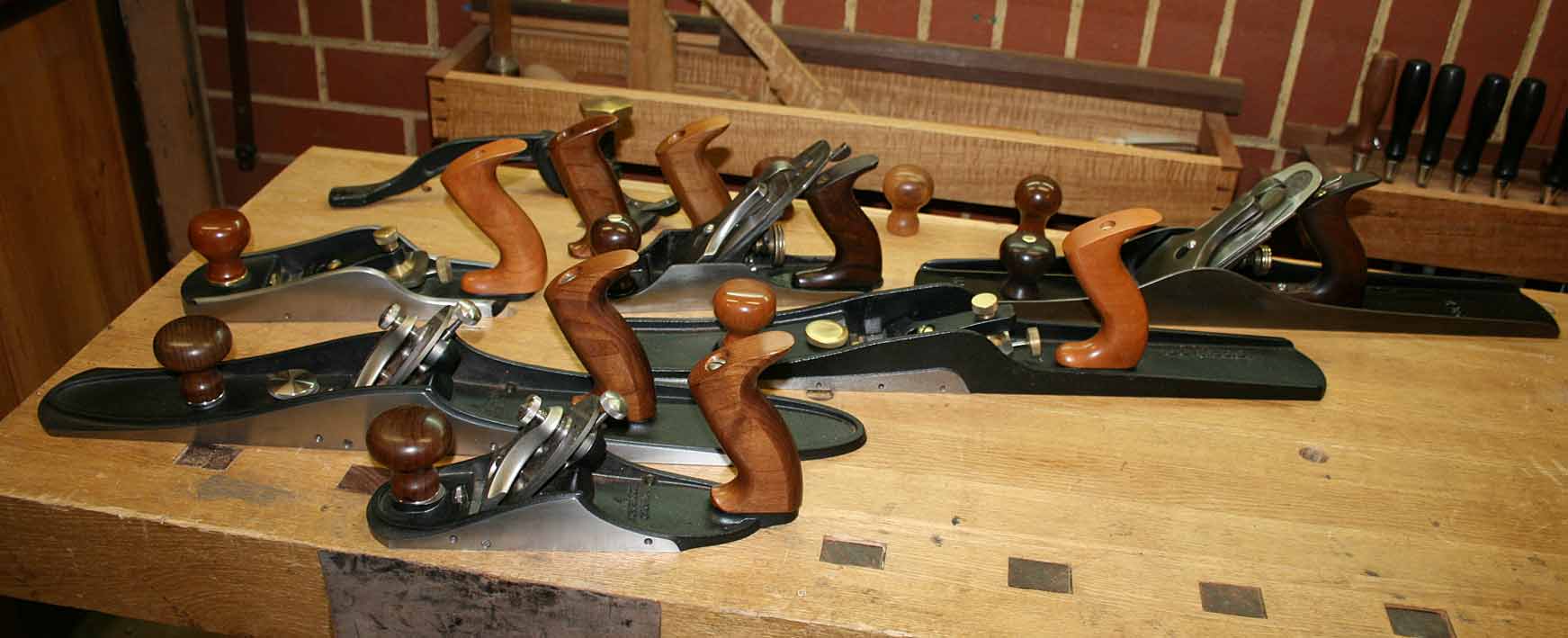My reference above is rich in information, but many are not going to go to it, so I will spell out a few issues.
I have been using BU bench planes for well over 10 years - from before their popular revival - and have been part of the pre-production testing team for Lee Valley/Veritas over this time. I am familiar with them all. I also demonstrate planes for Lie Nielsen at wood shows, and know their planes as well. My apology if this sounds pretentious.
Both companies make excellent bench planes, both BU and BD. You really cannot go wrong with either.
Having said that, there are differences of relevance in BU and BD bench planes.
For many years I was the strongest advocate of BU planes. I still am, but now prefer to use BD planes. BU planes are easy to use and are nearly foolproof. I only use two different cutting angles: 37 degrees for end grain (e.g. shooting board, or traversing across the grain when flattening a board); and 62 degrees for interlocked face grain. Note that different countries have different woods, and the level of complexity covers a wide range. My local Australian hardwoods are both extremely hard and extremely interlocked. A 50 degree cutting angle does not work any differently from a 45 degree cutting angle, both far too low in a BU bench plane for interlocked grain.
When honing BU blades with high cutting angles, I strongly recommend that you only purchase blades with a 25 degree primary bevel ... and not those with high angle bevels (such as sold by LV). The latter will be extremely hard work to add a camber ... and all bench plane blades should have some camber. That is another topic. The way to hone a BU blade is to add a micro secondary bevel via a honing guide (since the secondary angle is critical). I am happy to discuss this if anyone wants to know the details, and why.
High angle BD (Bailey pattern) planes are to be avoided. Resist the temptation to buy LN and Veritas bench planes with high angle frogs, especially the wider half sizes (e.g. #4 1/2, etc). They are more difficult to push (by contrast, high angle BU bench planes are not). The weakness of a high cutting angle plane is that it can generally only taking a thin, smoothing cut. This leads to a great deal of extra, time-consuming effort. Far, far better to get a BD bench plane with a common angle frog (45 degrees) and learn to set the chipbreaker (in my article above) to control tearout. Not only will such a plane be easier to push, and leave a better surface than a high cutting angle, but tearout is reduced to nil with the chipbreaker - one could plane into the grain without fear. This makes it possible to plane bookmatched panels, where the grains run in opposite directions.
This is skimming the surface. Just ask questions. Happy to answer.
Regards from Perth
Derek

